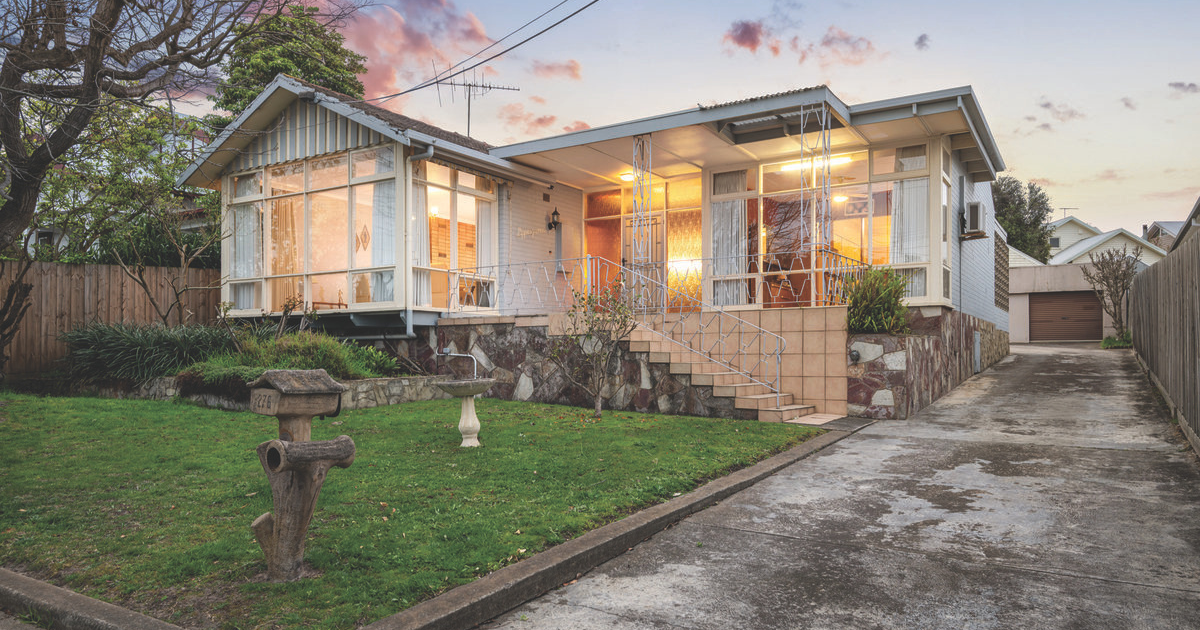As essential workers struggle to afford rent, Villawood are supporting essential workers to break the rent cycle

Rory Costelloe (centre) with a group of care and essential service workers who were able to build their home thanks to Villawood's supporting grants.
There have been no surprises in Anglicare’s recent release of its Rental Affordability Snapshot report, which reveals less than one percent of rentals are affordable for full-time workers in hospitality, construction and early childhood.
Delving deeper into the report, it shows that even workers with the highest award wages could only afford 3.7 percent of rentals.
Everybody’s Home, an advocate for housing solutions for all Australians, says that this new report revealing the unaffordability of housing for Australia’s essential workers underscores the urgent need for bold government action to end the crisis.
The organisation stated that from essential workers to people on the lowest incomes, millions of people were struggling to afford their biggest cost-of-living expense; rent.
“Housing stress and homelessness are far too high in our wealthy country; essential workers are increasingly being priced out of renting near their workplaces and the absence of these workers in our communities affects all of us.”
Everybody’s Home are calling on politicians to commit to our Roadmap to Reform, and for everyone to back their call to end Australia’s massive social housing shortfall.
“We must expand access to social housing so that it’s a viable option for more Australians, not just a safety net for people on the lowest incomes.
“Everyone deserves a safe, decent, affordable place to live, and the federal government has an obligation to make this happen.
“Tinkering around the edges on housing won’t create the change that Australians so desperately need – it’s time for bold action.”
And action is just what Villawood Properties have been doing in recent years. Not waiting for the slows wheels of bureaucracy, Villawood has provided more than $2million in assistance in the past four months to care and essential services workers looking to break the rent cycle and build a home.
Nurses, emergency services, teachers and medical staff have become key greenfield housing targets as the company spends up big to boost the community assets of its projects.
Villawood Properties has been providing $35,000 a head to 60 new home buyers under its Care Worker Support Program.
On the back of their earlier $20,000 and $10,000 rebates worth $4.6million prior to the $35,000 package, the care worker campaign has now helped more than 360 people buy a home in community close to where they work.
The main purchasers to date have been nurses, disability support workers and childcare teacher, with more than 100 sales to nurses.
The care campaign has also brought Villawood a national and two state marketing awards from the Urban Development Institute of Australia.
The feedback to Villawood from care industry recipients, many of whom are under-remunerated for their efforts, is that the program has helped provide financial security and eased the stress in their high-pressure lives.
Villawood started the program in Geelong in 2018, driven by ABS data showing care worker wages s could be as much as $21,000 below the average annual income.
PWC research also suggested up to 79 per cent of care workers didn’t think they would ever own their own home.
Villawood Properties executive director Rory Costelloe said the Geelong corridor had seen the biggest uptake overall, with 130 grants in the region.
“Giving care workers the certainty that they will be able to live near where they work enables them to offer better care for the community in growth corridors.
“Across the nation, suburbs on the fringe are the largest growing employment areas so it stands that we would want to attract highly qualified care workers as part of this mix.”

















